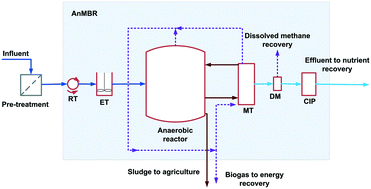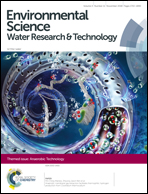Exploring the limits of anaerobic biodegradability of urban wastewater by AnMBR technology
Abstract
Anaerobic membrane bioreactors (AnMBRs) can achieve maximum energy recovery from urban wastewater (UWW) by converting influent COD into methane. The aim of this study was to assess the anaerobic biodegradability limits of urban wastewater with AnMBR technology by studying the possible degradation of the organic matter considered as non-biodegradable as observed in aerobic membrane bioreactors operated at very high sludge retention times. For this, the results obtained in an AnMBR pilot plant operated at very high SRT (140 days) treating sulfate-rich urban wastewater were compared with those previously obtained with the system operating at lower SRT (29 to 70 days). At 140 days SRT the organic matter biodegraded by the AnMBR system accounted for 64.4% of the influent COD (45.9% was removed by sulfate reducing bacteria (SRB), and only 18.5% was converted into methane, highlighting the strong competition between SRB and methanogenic archaea (MA) when treating sulfate-rich wastewater). Almost half of the methane produced (46%) was dissolved in the permeate and most of it was recovered by a degassing membrane. The organic matter biodegraded by the AnMBR system was similar to the influent anaerobic biodegradability determined by wastewater characterization assays (68.5% of the influent COD), indicating that nearly all the influent's biodegradable organic matter had been removed. This percentage of degraded COD was similar to that obtained in previous studies working at 70 days SRT, showing that the limit of anaerobic biodegradability was already reached in this SRT. The organic matter considered as non-biodegradable according to wastewater characterization assays therefore was not seen to degrade in the AnMBR pilot plant, even at very high SRT. Once the biodegraded COD is close to the influent's anaerobic biodegradability, increasing the SRT is not justified as it only leads to higher operational costs for the same biogas production. These findings support the use of mathematical models for AnMBR design since they accurately represent the behaviour of these systems in a wide range of operating conditions.

- This article is part of the themed collection: Anaerobic Technology


 Please wait while we load your content...
Please wait while we load your content...